NYC’s Forgotten ‘War on Christmas Trees’
Discover how an obscure holiday crackdown affects festive street vendors today!


Governor Andrew Cuomo has announced that the Moynihan Train Hall project will be completed on time, by December 31st, 2020 and opened to the public on January 1st, 2021. Plans to transform Penn Station from an outdated transportation hub into an efficient, modern destination, and to turn the Farley Post Office into Moynihan Train Hall, were first unveiled in 2016. Although proposals for the redesign process have been tossed around for over 20 years – stalled in part by funding issues and disputes between parties – the station will finally receive its long-awaited facelift. Check out those renderings and more details about the project below!
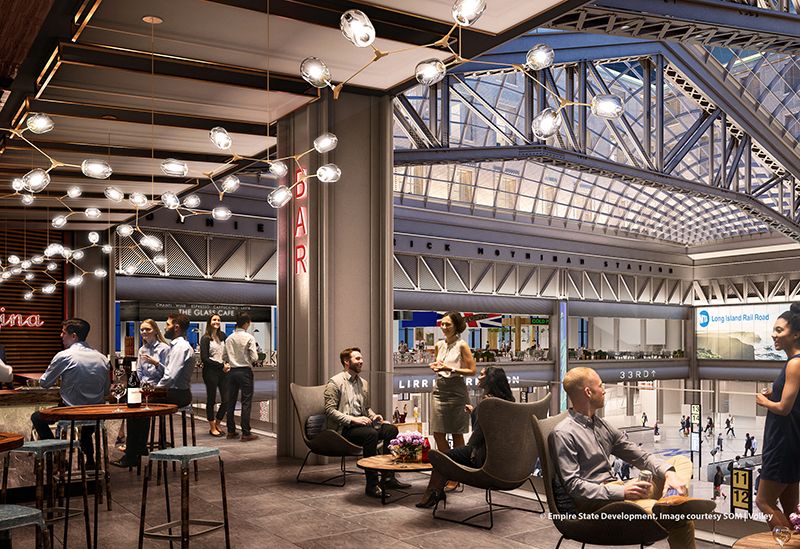
All images via Governor Andrew Cuomo
“It is dirty, it is dingy, it is dark and that is not what New York is all about,” said Cuomo, speaking at an Association for a Better New York event. “It’s the equivalent of LaGuardia Airport, which has now become the national laughing stock.”
As part of the $1.6 billion project, the James A. Farley Post Office Building will be converted into a spacious, 255,000-square-foot train hall that will house both Amtrak and Long Island Rail Road waiting rooms, dubbed the Moynihan Train Hall. Three firms (Related Companies, Vornado Realty LP and Skanska AB) have been hired to redevelop the space, which will include a new skylight and a selection shops and restaurants. In addition, 112,000 square-feet of retail space and nearly 588,000 square-feet of office space will be created within the Farley Building.
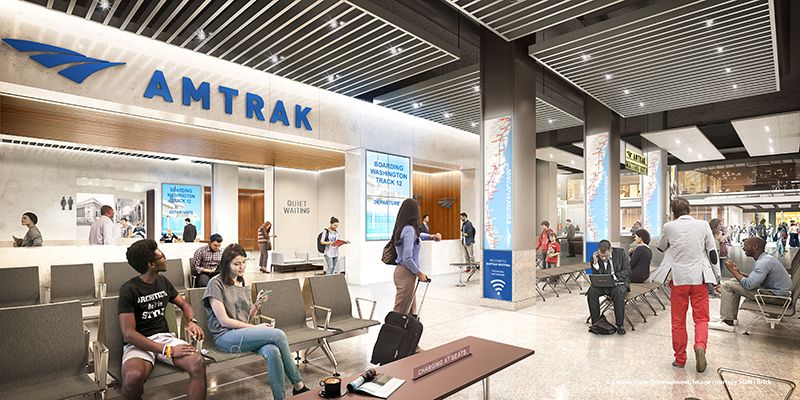
All images via Governor Andrew Cuomo
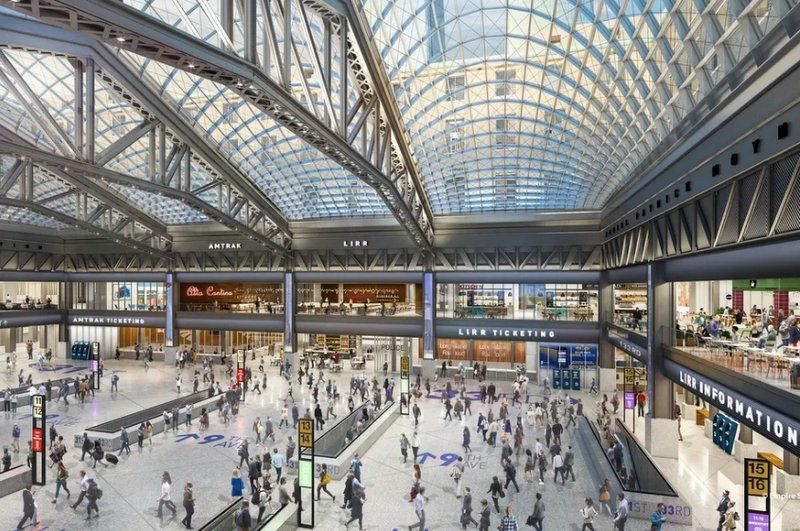
All images via Governor Andrew Cuomo
The Long Island Railroad‘s 33rd Street concourse (one of the busiest sections of Penn Station) and the adjacent Seventh and Eighth Avenue subway stations will also be renovated to decrease congestion. The new design will triple the width of the 33rd Street corridor, which will result in higher ceilings and brighter lights. It will also connect the future Moynihan Train Hall to Penn Station and provide direct access to LIRR and Amtrak tracks.
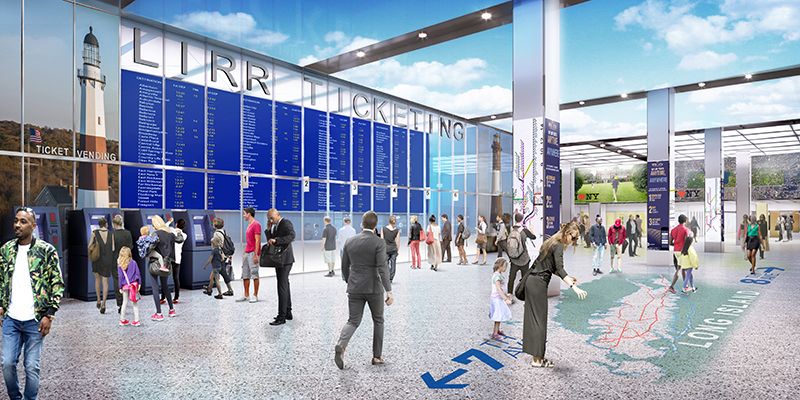
All images via Governor Andrew Cuomo
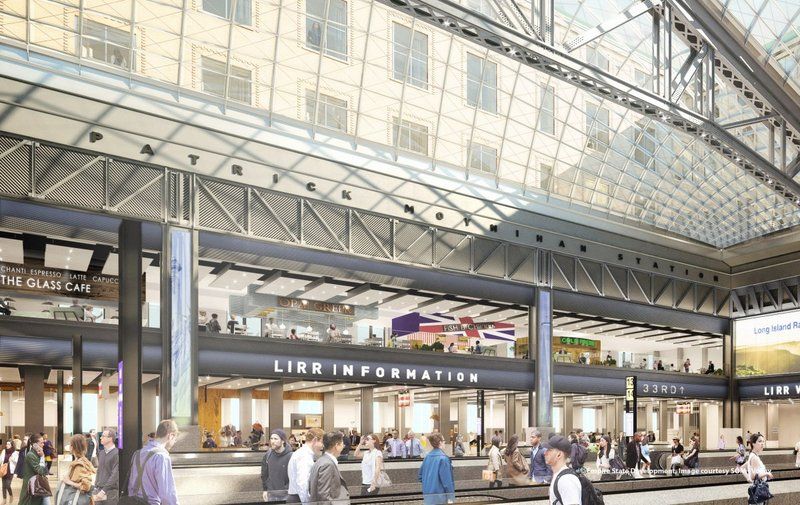
All images via Governor Andrew Cuomo
Senator Daniel Patrick Moynihan (1927 – 2003) originally advocated the idea of constructing a train depot at one end of the Farley Post Office. The proposal would have restored glory to Penn Station after its above-ground train hall was demolished roughly half a century ago.
In 2005, Related and Vornado were hired to carry out the job, which would have ultimately moved Amtrak passengers across the street (LIRR riders would remain in Penn Station). The developers also intended to move Madison Square Garden to the west annex of the post office to make room for skyscrapers or a glass mall over the Penn Station site. Though the Garden’s lease was limited to ten years, expiring in 2023, it now appears that Cuomo will not press the issue of a move.
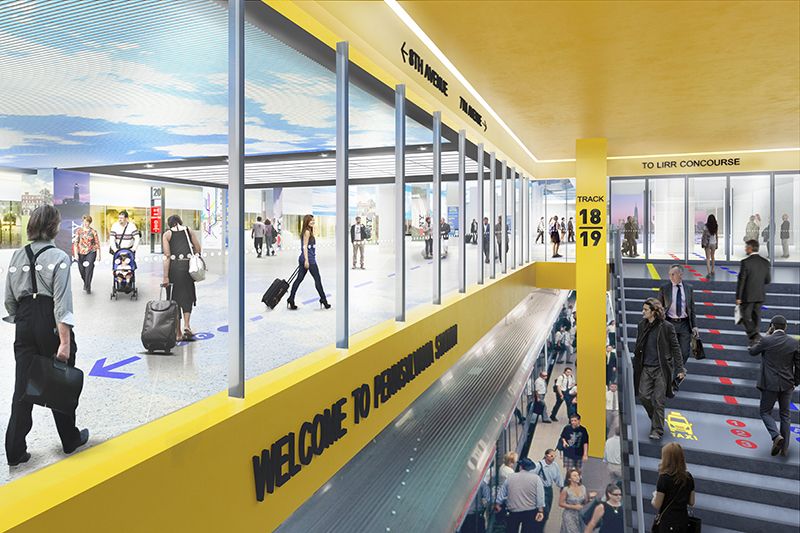
All images via Governor Andrew Cuomo
Cuomo’s current agenda addresses several flaws found in previous proposals. Amtrak and Long Island Rail Road passengers will both be moved to Farley to relieve congestion, and the actual depot will remain underneath Madison Square Garden. Once its corridors are widened, the ceilings will be raised two feet and video images of blue skies will also be utilized to brighten up the space and create the illusion of natural light.
To carry out the project, developers will pay New York State roughly $600 million for the rights to construct the commercial and retail space. Empire State Development Corp., a state agency, will also contribute $570 million, while Amtrak, the LIRR, Port Authority and the federal government will pay $425 million.
Critics of the project have found the lack of transparency to be particularly distressing. Because Penn Station is certain to drastically impact the economic future of the city, it’s necessary to work towards the highest standard when it comes to design and efficiency. The voice of the public has been conspicuously missing, a noticeable lack since the station shepherds over 600,000 people per day – more than the combined numbers that pass through New York City area’s three major airports daily. Particularly distressing to us as well will be the destruction of the numerous remnants of the original McKim, Mead & White Station that sit unnoticed within the current station.
Join us for our upcoming tour of the Remnants of Penn Station to uncover pieces of the original McKim, Mead and White designed station!
Next, check out The Top 10 Secrets of the Original Pennylvania Station in NYC and 5 Remnants of the Original Penn Station in NYC.
Subscribe to our newsletter